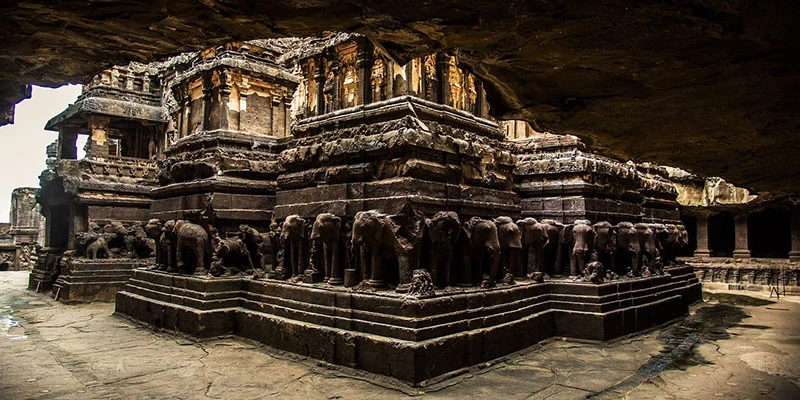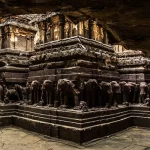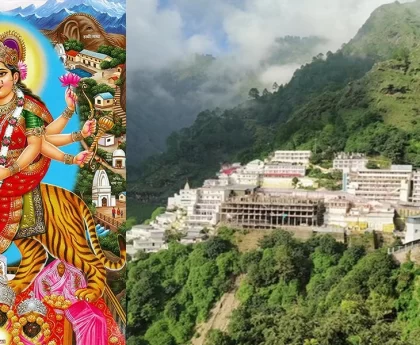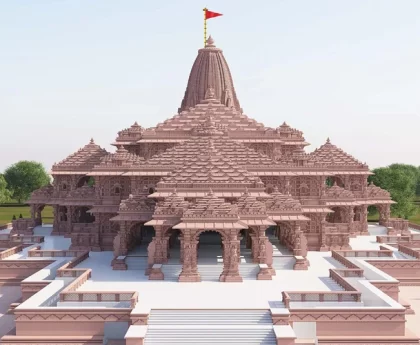Ellora Caves are remarkable historical and cultural site located in Maharashtra, India, not far from the Ajanta Caves. Like Ajanta, Ellora is a UNESCO World Heritage Site, and it’s renowned for its impressive rock-cut architecture and religious artworks.
- Location: The Ellora Caves are situated near the village of Ellora in the Aurangabad district of Maharashtra, India, approximately 30 kilometers (19 miles) from the city of Aurangabad.
- Chronology: Ellora represents a different period of Indian history compared to Ajanta. While Ajanta primarily dates from the 2nd century BCE to the 6th century CE, Ellora’s construction spanned a much longer period, from the 6th to the 10th century CE. This extended timeline encompasses the reigns of various dynasties, including the Rashtrakutas, Chalukyas, and Yadavas.
- Rock-Cut Structures: Similar to Ajanta, the Ellora Caves are carved into the Charanandri Hills, showcasing a stunning array of rock-cut temples, monasteries, and shrines. However, Ellora is unique for featuring not just Buddhist caves but also Hindu and Jain caves, making it a testament to the religious harmony and cultural diversity of ancient India.
- Religious Diversity: The caves at Ellora are divided into three main groups based on their religious affiliations: Buddhist (Caves 1-12), Hindu (Caves 13-29), and Jain (Caves 30-34). Each group contains elaborately carved temples and sculptures dedicated to their respective deities and principles.
- Kailasa Temple: One of the most remarkable structures at Ellora is the Kailasa Temple (Cave 16), dedicated to Lord Shiva. It is the largest monolithic structure in the world, carved from a single rock, and it stands as a masterpiece of Indian rock-cut architecture. The construction of the Kailasa Temple is attributed to the Rashtrakuta king Krishna I (757–773 CE).
- Artistic Marvels: The Ellora Caves are adorned with intricately carved sculptures, friezes, and panels depicting various mythological narratives, deities, and celestial beings. The craftsmanship and artistic finesse displayed in these carvings are awe-inspiring and offer insights into the religious beliefs and cultural practices of ancient India.
- UNESCO World Heritage Site: Ellora was inscribed as a UNESCO World Heritage Site in 1983, along with the nearby Ajanta Caves, recognizing its outstanding universal value and significance as a cultural heritage site.
- Visitor Experience: Today, the Ellora Caves continue to attract visitors from around the world who come to marvel at their architectural splendor and artistic treasures. Guided tours and visitor facilities are available to enhance the experience of exploring these ancient wonders.
Overall, the Ellora Caves stand as a testament to the ingenuity, creativity, and religious devotion of ancient Indian civilizations, offering a fascinating glimpse into the country’s rich cultural heritage.
Location
The Ellora Caves are located in the Aurangabad district of Maharashtra, India. Specifically, they are situated near the village of Ellora, approximately 30 kilometers (19 miles) northwest of the city of Aurangabad. The caves are carved into the Charanandri Hills, which lie to the north of Aurangabad. This strategic location amidst the rugged terrain adds to the allure and grandeur of the site, providing a picturesque backdrop for these ancient architectural marvels.

History of the Ellora Caves is as fascinating as their architectural grandeur. Here’s a brief overview:
- Early Development: The Ellora Caves were excavated over several centuries, from the 6th to the 10th century CE. The construction of these caves spanned the rule of different dynasties, including the Rashtrakutas, Chalukyas, and Yadavas. These dynasties were patrons of various religious traditions, which is reflected in the diversity of the caves.
- Religious Significance: Ellora is unique among Indian rock-cut cave complexes because it incorporates Buddhist, Hindu, and Jain caves within close proximity. This reflects the religious pluralism and tolerance of ancient India, where adherents of different faiths coexisted and even shared sacred spaces.
- Buddhist Caves: The earliest caves at Ellora are Buddhist, dating back to the 6th century CE. These caves, such as Cave 5, showcase chaitya halls (prayer halls) and viharas (monasteries) adorned with elaborate sculptures and carvings depicting the life of the Buddha and Buddhist cosmology.
- Hindu Caves: The Hindu caves at Ellora, numbering from Cave 13 to Cave 29, were predominantly constructed during the Rashtrakuta period (8th to 10th century CE). These caves feature impressive temples dedicated to various Hindu deities, with Cave 16, the Kailasa Temple, being the most iconic. It is renowned as the largest monolithic structure in the world, carved from a single rock.
- Jain Caves: The Jain caves at Ellora, numbering from Cave 30 to Cave 34, were primarily built during the rule of the Rashtrakutas and Yadavas. These caves contain exquisite sculptures and reliefs depicting Jain Tirthankaras (spiritual leaders) and scenes from Jain mythology.
- Cultural Exchange: The Ellora Caves bear witness to the artistic and architectural exchange that occurred between different religious communities and dynasties in ancient India. They represent a fusion of indigenous Indian styles with influences from Central Asia and beyond.
- Rediscovery: Like the Ajanta Caves, Ellora remained hidden for centuries until their rediscovery by British colonial officers in the early 19th century. Their rediscovery sparked renewed interest in India’s ancient heritage and led to efforts to preserve and study these remarkable monuments.
Overall, the Ellora Caves stand as a testament to the religious diversity, artistic excellence, and cultural sophistication of ancient India, attracting visitors and scholars from around the world to marvel at their beauty and historical significance.
Here are some interesting facts about the Ellora Caves in Maharashtra:
- Rock-Cut Architecture: The Ellora Caves are renowned for their impressive rock-cut architecture, with most of the structures carved directly into the Charanandri Hills. This monumental task required intricate planning and skilled craftsmanship, resulting in some of the most magnificent examples of rock-cut architecture in the world.
- Religious Diversity: Ellora is unique in that it features caves dedicated to three different religious traditions: Buddhism, Hinduism, and Jainism. This diversity of religious sites within the same complex is a testament to the religious tolerance and cultural syncretism of ancient India.
- Time Span: The construction of the Ellora Caves spanned several centuries, from the 6th to the 10th century CE. This extended period of construction reflects the patronage of various ruling dynasties and the evolution of architectural styles over time.
- Kailasa Temple: The Kailasa Temple (Cave 16) at Ellora is one of the most remarkable structures in the complex. Carved out of a single rock, it is the largest monolithic structure in the world. The temple is dedicated to Lord Shiva and is adorned with intricate sculptures and carvings depicting various Hindu mythological themes.
- Jain Caves: Ellora is home to a series of Jain caves (Caves 30 to 34) that showcase the rich artistic and religious heritage of Jainism. These caves feature intricately carved sculptures of Jain Tirthankaras (spiritual leaders) and elaborate decorative motifs.
- UNESCO World Heritage Site: The Ellora Caves were designated as a UNESCO World Heritage Site in 1983, recognizing their outstanding universal value and cultural significance. They are considered one of the finest examples of ancient rock-cut architecture and religious art in the world.
- Architectural Marvels: The caves at Ellora exhibit a wide range of architectural styles, from simple monastic cells to elaborate temple complexes. Each cave is adorned with exquisite sculptures, friezes, and ornamental carvings that reflect the artistic mastery of ancient Indian artisans.
- Tourist Destination: Ellora attracts thousands of visitors each year who come to admire its architectural splendor and learn about its rich cultural history. Guided tours and visitor facilities are available to enhance the visitor experience.
- Cultural Exchange: The Ellora Caves bear witness to the cultural exchange that occurred between different religious communities and dynasties in ancient India. The synthesis of architectural styles and artistic motifs from diverse traditions is a testament to the cosmopolitan nature of Indian civilization.
- Conservation Efforts: Efforts have been made to preserve and protect the Ellora Caves from natural and human-induced threats. Conservation measures include structural stabilization, environmental monitoring, and visitor management strategies to ensure the long-term preservation of these invaluable cultural treasures.





